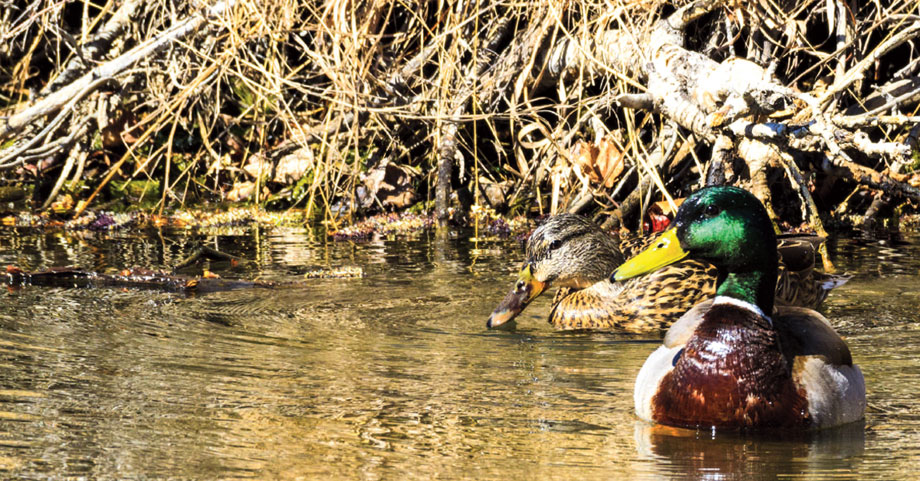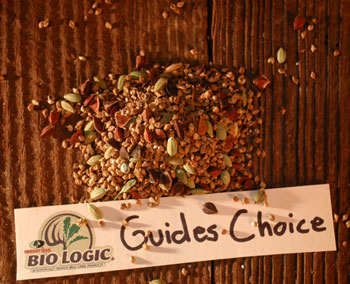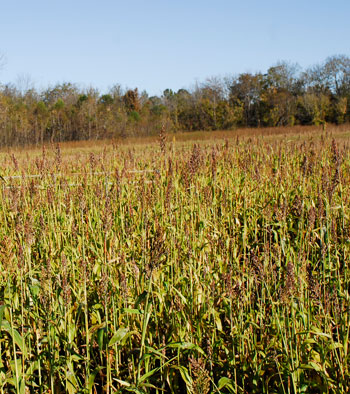Bobby Cole | Originally published in GameKeepers: Farming for Wildlife Magazine. To subscribe, click here.

It’s a fact that you can attract and hold waterfowl if you plant areas with specific crops. We really don’t refer to them as food plots when in regards to waterfowl, but in essence, that’s what they are. Ducks, just like deer and most other wildlife, are always in search of that next meal and once they find a good location, they will steadily utilize it until it’s either gone, the need for migration takes over or hunting pressure forces a move.
And there’s more. Ducks are gregarious. Over time, you will have more and more birds utilizing your offerings. These birds will imprint on the spot — if you treat them right. That means providing a food source they prefer, but equally important, you have to manage hunting pressure. When a duck hunter is also a gamekeeper, each duck season seems to improve.
More Than a Food Plot
So how do you make food plots for ducks? In an ideal world, you would have a water control structure that would enable you to catch and drain water at will. It would allow you to raise the water level as you want and flood the majority, but leave some available to be flooded later in an effort to have more food later in the season.
Planting for ducks takes some planning. The actual planting has to occur in midsummer when everyone else is fishing at the lake or enjoying the air conditioning. However, having “groceries” in your duck pond dramatically improves its ability to attract and hold waterfowl. This is proven time and time again.
Corn is a popular crop and it — without a doubt — attracts waterfowl. I also like its higher structure. It helps make ducks feel safe. They can swim into it and not feel so exposed to avian predators. Corn also attracts invertebrates that ducks need in their diet as it breaks down in the water. Corn is expensive and somewhat labor-intensive to plant since you have to apply nitrogen and usually spray for weeds. Like anything, growing season matters. On average, corn needs 100 days to mature so it is ready before hunting season.
There are other crops like soybeans, Egyptian wheat, milo and sunflowers that ducks also love to eat, but don’t last long in the water. They break down and deteriorate through the season.
At Mossy Oak, managing for waterfowl and watching out for snakes is a big part of our late summer. Our founder, Toxey Haas, is obsessed with attracting and holding waterfowl and regularly plants every piece of open ground he can, as long as he can get his Can-Am four-wheeler into it. He has learned the hard way and regularly shares his knowledge to help others.
Guide's Choice
 He has had very good success with a BioLogic blend called Guide’s Choice. We’ve planted it every way we can, but what seems to work best in our area is to broadcast it on mud flats.
He has had very good success with a BioLogic blend called Guide’s Choice. We’ve planted it every way we can, but what seems to work best in our area is to broadcast it on mud flats.
We pull boards and drain impoundments during early July. The dates when you add or pull boards in your risers will vary depending on location. We’re located in northern Mississippi so adjust your timing accordingly. If you’re farther north, it will be earlier and if you’re farther south, it can be later.
Millet and More
Guide’s Choice is planted at a rate of 20 pounds per acre. The major component is a specially selected variety of Japanese millet plus a light addition of grain sorghum and buckwheat – all plants that waterfowl relish. Under normal conditions, the crop matures in about 65 days, but during dry, stressful conditions, it is able to mature faster. It’s easy to grow in most wetland areas and the ducks love it.
If it’s really dry during the growing season, you’ll see more grain sorghum, and in really wet years, you’ll see the millet take over (it loves having its “feet” wet).
We’ve experimented with having buckwheat in the blend. If you have a really high deer density, they can eat the buckwheat out of the plot. Buckwheat is also a broadleaf and created some challenges to control weeds with a grass-specific herbicide. We have made the decision to remove the buckwheat going forward and this will allow to easily spray a broadleaf herbicide to kill cockleburrs, sicklepod and others weeds that don’t have any value for waterfowl while allowing barnyard grass and other seed-producing grass plants that are beneficial to thrive.
You can plant this right into a dry seedbed just like a traditional food plot. So if you have an oxbow lake or a beaver pond that dries down in the summer, you can plant the edges. Ideally speaking, if you have a water control structure and you pull the boards to drain it, in the days immediately following you should plant the Guide’s Choice right into the moist soil. Toxey refers to this moisture as “liquid gold.” It’s already there, it’s yours and you need to take advantage of it.
The seed will immediately germinate in this perfect scenario. A good ATV with a broadcast seeder is the best way to spread the seed, or we have used the blower attachment made by Extreme products in smaller duck ponds. A good old-fashioned hand seeder also works great. It’s just oftentimes hard to walk in these muddy conditions. Typically, these areas are fertile and the Guide’s Choice doesn’t need a lot of fertilizer. Like many grasses, it can benefit from some nitrogen if you can apply it. I’d suggest doing a soil test to determine what, if anything, you may need to apply.
 A threat in August and September is army worms. These pesky caterpillars emerge from the cracked earth under dry, stressful conditions and can damage a crop quickly. During this time of the year, you have to keep an eye out for damage. Immediately upon seeing any signs of damage, you need to spray. Your local farm supply store can help with a solution to kill the pests. It’s not complicated and there are many contact killers that can be sprayed and provide relief for the crop.
A threat in August and September is army worms. These pesky caterpillars emerge from the cracked earth under dry, stressful conditions and can damage a crop quickly. During this time of the year, you have to keep an eye out for damage. Immediately upon seeing any signs of damage, you need to spray. Your local farm supply store can help with a solution to kill the pests. It’s not complicated and there are many contact killers that can be sprayed and provide relief for the crop.
The water structure I referenced earlier is a very important piece of this puzzle. A good unit can make your job easier in terms of catching water, maintaining a specific level and draining. It’s basically a fabricated piece of metal that attaches to a pipe. It is placed at the lowest point for drainage purposes and most are built to hold boards that are stacked in the fabricated grooves to determine the height of the water. You can raise or lower the water four or six inches at a time with standard cut lumber. The best commercial unit I have found is made by Osceola Machine.
It is also suggested to plant BioLogic’s Blind Spot around where you determine your blind locations will be and several other areas around the pond. The plants in Blind Spot can get eight to 10 feet tall in a matter of a few weeks and provide natural vegetative cover. I think it’s important to plant other patches of it so you have options to move to in different wind conditions, and then your blind doesn’t stand out being the only patch of that specific tall vegetation.
Keep Duck Hunting Pressure in Check
Lastly, duck hunters should manage their hunting pressure. Don’t shoot them every day. You should even consider not hunting them at all during the first few years of establishing an impoundment. If you have a lot of birds at daylight, you should consider flushing them and shooting the smaller groups as they return so you don’t educate the entire population. Just be smart. If you’re getting fewer ducks this duck season, hunt less.
I love the idea of planting food plots for waterfowl. Some upland properties won’t have any opportunities for this, but many lowlands will have a low spot in an agricultural field or a beaver pond in a swamp. All it takes is a little effort on the front end to build a slight levee or install a structure. It’s a one-time expense that will provide you with a project that has the potential to get better and better each year as the ducks imprint on the place. Not only will this provide you with great hunting each duck season, but it will supply waterfowl with food and sanctuary. As gamekeepers, we just have to do our part.





























